Bittersweet nightshade
Bittersweet nightshade, Solanum dulcamara. Purple flowers with yellow stamens give way to bright red berries, edible for some birds, which disperse the seeds widely, but the berry is poisonous to humans and livestock. WT
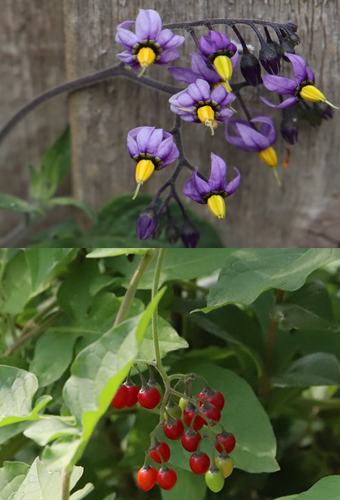
Bittersweet nightshade, Solanum dulcamara. Purple flowers with yellow stamens give way to bright red berries, edible for some birds, which disperse the seeds widely, but the berry is poisonous to humans and livestock. WT
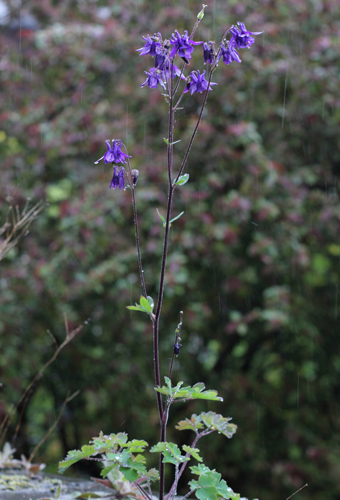
Blue aquilegia, Aquilegia vulgaris. Common names: Granny’s Bonnet or Columbine. The genus name Aquilegia is derived from the Latin word for eagle (aquila), because the shape of the flower petals are said to resemble an eagle’s claw. The common name “columbine” comes from the Latin for “dove”, due to the resemblance of the inverted flower to five doves clustered together. […]
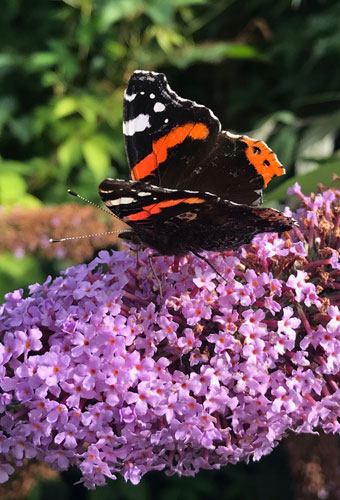
Buddleja, Buddleja davidii. This extremely successful shrub (sometimes referred to as the butterfly bush) is frequently seen beside railway lines, but has the ability to self seed and establish with no difficulty on brick structures such as bridges where its roots break up masonry over a quite short period of time. It is very popular with bees, butterflies, moths and […]
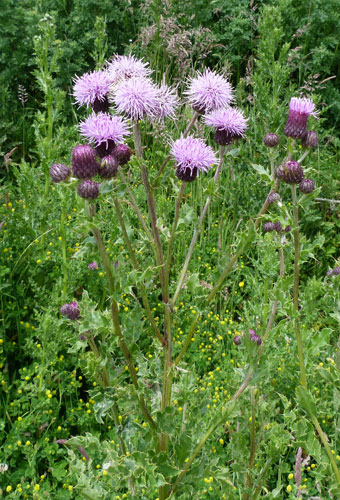
Creeping thistle, Cirsium arvense. Other names include Lettuce from hell thistle and Cursed thistle. It forms extensive colonies via an underground root system. Seeds have a feathery pappus which helps with wind dispersal. Seeds are important for Goldfinch and Linnet and used as a food by over 20 species of butterfly including Painted Lady. It’s an invasive species, present in the […]
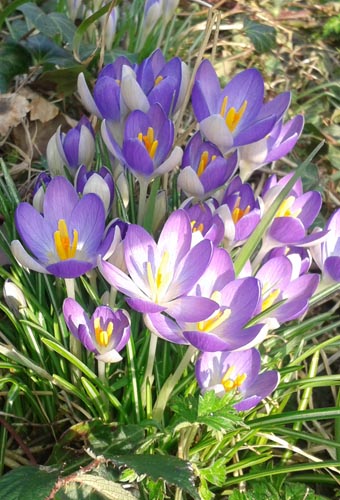
Crocus, Crocus chrysanthus. Bears vivid bowl-shaped flowers. Its common name, “snow crocus”, derives from its exceptionally early flowering period, blooming about two weeks before the giant crocus, and often emerging through the snow in late winter or early spring. The leaves are narrow with a silver central stripe. Present, although probably planted, on the northern section in Muswell Hill.

Mallow, Malva. This plant is one of the earliest cited in recorded literature. Horace mentions it in reference to his own simple diet: “Me pascunt olivae, me cichorea, me malvae” (“As for me, olives, endives, and mallows provide sustenance”). Lord Monboddo describes his translation of an ancient epigram that demonstrates malva was planted upon the graves of the ancients, stemming from […]
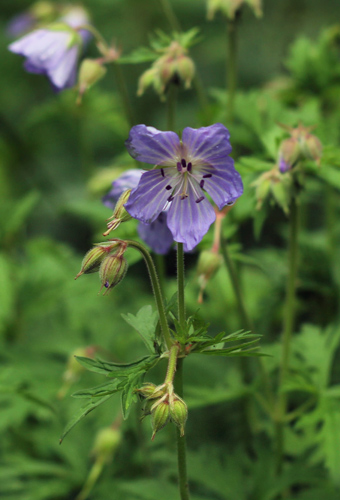
Meadow cranesbill, Geranium pratense. Part of the geranium family, The leaves are deeply divided into 7-9 lobes and 3-6 inch wide and the flowers are pale blue, although getting paler into the centre. The flowers have 5 petals, which sometimes have veins. The stamens have pink-purple stalks with dark purple anthers. Photo: Stephen Middleton
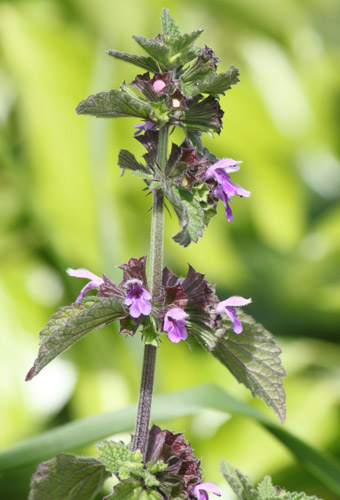
Purple dead nettle, Lamium purpureum. Though similar to a nettle in appearance, it is not related, doesn’t sting and is a member of the Mint family. The flowers may be produced throughout the year, including mild weather in winter. This allows bees to gather its nectar for food when few other nectar sources are available. It is also a prominent source […]
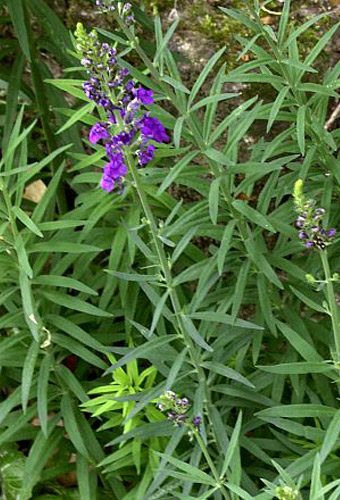
Purple toadflax, Linaria purpurea. Closely related to the Antirrhinum (snapdragons) this plant grows to about a metre high. Its value lies in its flowering season which extends from April to late September and provides a valuable source of nectar for bees. Its leaves also provide food for a variety of moths.

Russian comfrey, Symphytum x uplandicum. Comfrey is a particularly valuable source of fertility to the organic gardener and is used as a compost activator, liquid fertiliser, mulch or potting mixture. Comfreys have been used as traditional medicinal plants in Europe for centuries. Russian comfrey can be considered as a toxic plant and some comfrey products have been banned for human […]